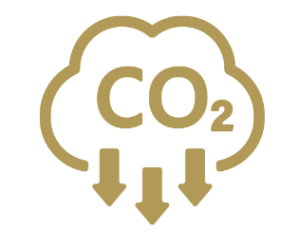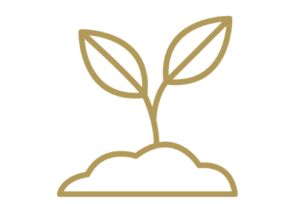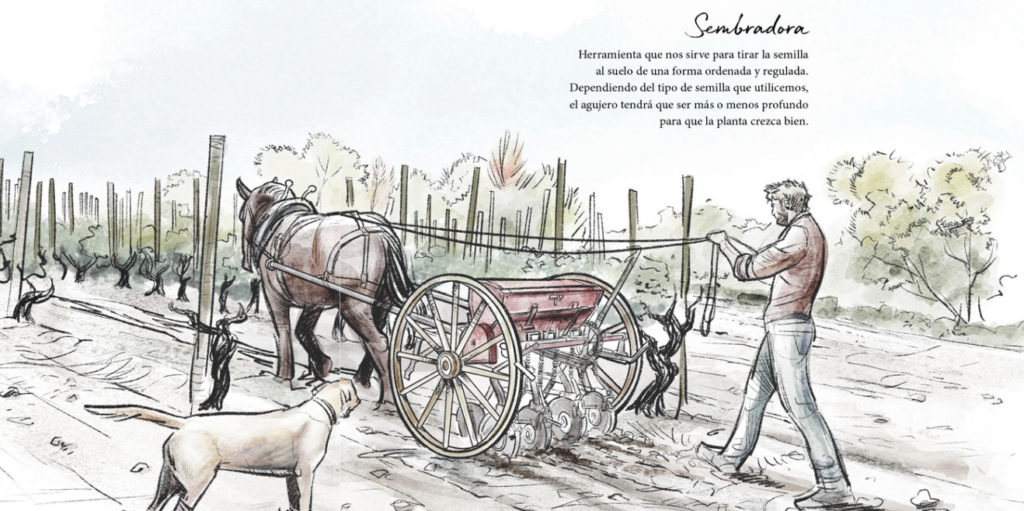More than 10 years of animal traction on the estate

10 hectares and three horses
More than a decade ago, around 2009, we began to work our most emblematic plot, Clos del Serral, with the help of horses, as an alternative to the use of tractors in such a unique environment. The benefits were almost immediate, and we decided to extend the work with animal traction to other vineyards of the estate; until today, more than 10 hectares are already worked with animal traction.
Thus, the Raventós i Blanc vineyards are gradually returning to those times when the entire estate was worked with 8 horses – as Manuel Raventós remember-.
After more than 10 years working our vineyards with this ancestral practice, and with three of our own horses living on the estate’s farm, we are witnesses of the great benefits that this brings in the short and long term for the vines and for the soil.
What are the benefits of animal traction?
In the short term and immediately, animal traction has three major benefits for the ecosystem, the environment and the vineyard:

Plowing in the vineyard of Noguer Alt
- Reduce C02 emissions: we only use old tools adapted to the new times, dragging tools prepared for each type of work in the vineyard. This way we can keep the vineyards free of C02 from machinery.

- Take care of the plant personally: it means the maximum respect for the vines that in case of error the animal would never break them and a tractor would. In addition, working with animal traction is ideal for old vines in goblet training or on sloping plots, where the machine cannot access, because of its lightness, the animal can adapt to the land.

Last but not least, it helps to maintain more lively and structured soils. Soils and their nutrients are the great protagonists when it comes to maintaining a healthy and strong vineyard; they are the basis for our local varieties to nourish themselves.

- Reduce compaction: The soil remains spongy and there is more life (insects, fungi, bacteria, worms…) and the roots of the vines develop better. In this way, the plant covers grow more vigorously and allow the soil to decompact and bring organic matter to the soil, which is necessary for its good fertility.
Biodynamic and regenerative viticulture help enormously to have living soils, animal traction allows to keep the soils spongy, structured and thus favor the life of thousands of micro-organisms that live in them.
Animal traction work and tools
The work is carried out with old tools, often adapted to current needs or improved with new techniques. Each one of them has a concrete and specific function.
The main tasks are: plowing the land and weeding, these are the tasks that occupy more months in the vineyard calendar. In addition, we sow the plant covers between passes.

Plowing consists of removing the deeper soil to eliminate invasive weed roots and aerate the soil. On the other hand, we often plow by placing soil at the base of the stock to protect it from the cold in months when there may be frost (wedging the stock) or the other way around, throwing the soil in the center of the passes, in the hottest seasons to control the birth of grass. Work that we carry out with the weeding shovel.

Weeding allows us to clean more superficially the passes of the plots to eliminate the first growths of weeds that compete with the vine for water. To do this, we use the Vibrocultor. Sometimes we also use it, once the land is plowed, to prepare it for planting.
In larger vineyards we use the Avantren, which allows two horses to work at the same time. And it allows us to hitch up different types of tools, such as the inter-trap.

Finally, as we said at the beginning, we also sow our cover crops, which we then use to nourish the soil in the vineyards or as food for our animals. This work is carried out with the seeder, which is used to throw the seed on the ground in an orderly and regulated manner.

How are our horses?

Françoise, Henri and Kinder
At the beginning of this adventure, horses came from animal traction experts; as time went by we decided to have our own horses. The first owned horse was François Calypso d’Arrien who arrived in 2017. Breton horse, by his constitution of 1,75m and weighing 800kg, he is a great ally for these field tasks. Friendly, strong and very docile character.
In 2019 we are looking for a companion for him: Henri Crystal de Jura. Of Traït Comtois breed, he weighs 750kg and measures 1,65m, elegant and distinguished, introverted and serious at work. Françoise represents strength and Henri is more agile in the vineyard, a perfect combination.
Kinder d’Hery arrived in 2022. Also, from the Jura (Pont-d’Hery) and with great physical resemblance to Henri. Kinder is only 5 years old and weighs 600kg, he is young and is training to do the jobs that his colleagues do.

Having horses on the farm is a way to recover a tradition and to make our farm as sustainable as possible. A estate with a living farm organism in which horses are a fundamental part to achieve a living and more fertile soil.
The spiritual connection that exists between man, animal, plant and earth, allows us to walk consciously among the vines, contemplate and get to know each vine.

-
- Our journey began in 1497 when our ancestors began working on the estate.
Today we produce quality wines, with a unique character and their own personality.
We invite you to form part of a passionate, entertaining tour, full of curiosities, adventures and special moments that features the 21st generation descendent who dreams of a designation of origin: Conca del Riu Anoia.
Do you feel like sharing this journey with us? We promise you won’t be disappointed on the way.
Welcome!
- Our journey began in 1497 when our ancestors began working on the estate.
-
Categories
-
Archive
-
Tags
#veremasolidaria associaciones biodinámica biodiversidad Biodynamic preparations Biodynamics biosinergias Cata Clos del Serral Conca del Riu Anoia delafinca ecológica ecológico ecosistema finca fincaraventos Finca Sostenible futuro viñador granja penedesenca harvest masdelserral newyork Nueva York orgànica Pepe Raventós Poda Poda con luna llena poda de invierno Primavera raventosiblanc Raventós Raventós i Blanc Sant Sadurni sparkling sparklingwine terroir Tracció animal Tracción animal Vendimia verema viticultura viticultura organica viticulture Viña viñedos



